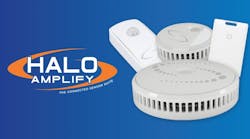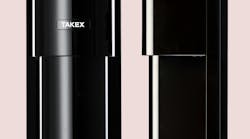One of the most often asked questions among fire alarm installers working for the first time in a new jurisdiction is, "What is the fire inspector looking for during final inspection?" This question is also often asked amongst installers working in a large jurisdiction with multiple fire inspectors, some of whom they may have not had the privilege to work with before. I can understand that at times this might be uncomfortable or stressful, but hopefully I can help put you at ease with a few suggestions.
First of all we look for the system to be installed per the plan submittal that we received during the plan review period. In fact, from my experience, it is becoming more common during the final inspection for the inspector to bring a copy of the same plan submittal that you or your company submitted to the inspector for approval before installing the system. If the installation does not match the submittal or if there are discrepancies with unapproved locations of devices, then right there at the beginning of the inspection, you'll have already done a good job of getting under your inspector's skin.
Why do I say this? It goes right back to NFPA 4.5.1.1, which states: "The authority having jurisdiction shall be notified prior to installation or alteration of equipment or wiring. At the authority having jurisdiction's request, complete information regarding the system or system alterations, including specifications, shop drawings, battery calculations, and notification appliance circuit voltage drop calculations shall be submitted for approval."
Secondly we look for a system that actually works. There are many times when we arrive for your final inspection and there are some loose ends that have not been tied up; in other cases, you may have not completely tested your system. I can tell you first hand; this is what irritates fire inspectors the most. The best way to build a good relationship with your inspector is to build up his confidence in the system by testing and testing and testing again your system before he shows up. Again, if things do not seem to match what was submitted, you will dig deeper under the inspector's skin.
Again, consider NFPA 72, the National Fire Alarm Code, and focus your attention on section 4.5.1.2, which states: "Before requesting final approval of the installation, if required by the authority having jurisdiction, the installing contractor shall furnish a written statement stating that the system has been installed in accordance with approved plans and tested in accordance with the manufacturer's specifications and the appropriate NFPA requirements."
Next, consider how your points are configured. Many of the combination systems come with defaults set from the manufacturer such that all of the points beyond number two are burglar points. You or your download specialist will need to take the time to change them to fire or supervisory points. This is usually found during the final inspection and, again, has a negative effect on the inspector.
Take the time to walk through your entire system, testing every device and verify with your monitoring center that each device sent the correct signal. This isn't just important for your inspection, but it's important to your company's bottom line as well. Imagine your fire safety/alarm company eating $20,000 just because a fire pump run reported in to the monitoring center as a "trouble" and was not responded to properly by the owner or the fire and alarm contractor. If the signal isn't correctly identified, the pump could burn itself out after a day of running and might cause a damaging water flow in the pump room.
Finally, double check with your monitoring center that all of the information about the premises is correct. We do not like to send fire apparatus to the wrong address and I am sure the owner of the premises - your client - would not be pleased either. Ensure that the information on the call list is correct. Also make a point to ensure that the cross street is correct and that any that notes about the system which need attention are correct. And just to cover your bases, make sure you have a runner to respond in a timely manner for any alarm, supervisory or trouble condition.
Do not hesitate to become proactive with your installation. Take pride in what you do and the systems you install. You are part of the life safety community together with police and firefighters, and your work will impact people's lives on a daily basis.
As someone who has worked in your shoes and now works as an inspector, you should know that is our goal to ensure that the premises are protected by a good reliable system. In sum, we are here to work with you and not against you. By partnering with us during the fire systems installation and inspection process, we can better protect the people in our communities.
About the author: Lieutenant Greg Hedrick is a fire inspector with the Fire Department of Olive Branch, Miss., a town that is a part of the growing Memphis, Tenn., suburbs. He is NICET Level III certified and before serving as a fire inspector, amassed 10 years of experience in the fire alarm contracting industry with a large systems dealer.
Share Your Knowledge:
Discuss fire alarm systems and code requirements in our Tech Corner online discussion forum.

